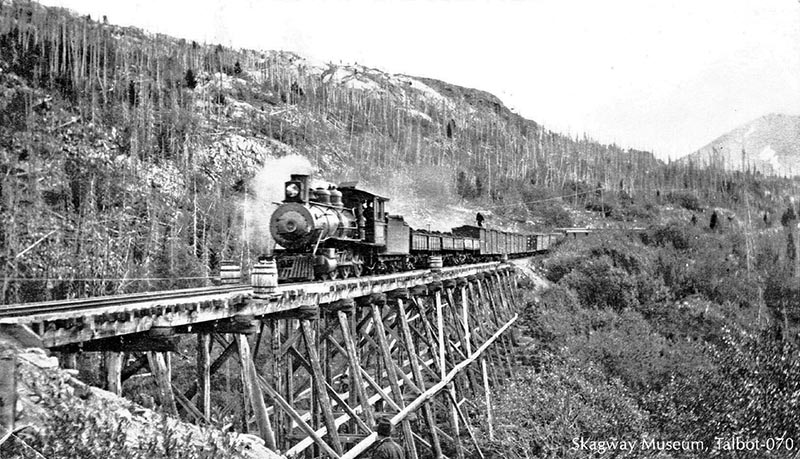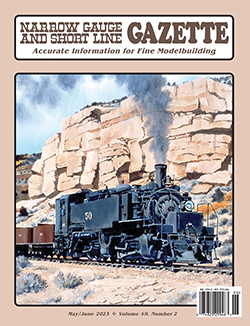The White Pass & Yukon Route starts in Skagway, Alaska, crosses the Coast Range Mountains, and proceeds north to the town of Whitehorse, Yukon Territory. To reach the summit, some twenty miles from Skagway, the rails twist and turn up the mountains with the grades approaching 4 percent. These first twenty miles and the next twenty to Bennett get the brunt of the snow on the White Pass. Not only did this section get more snow, but this portion of the line was prone to avalanches and snow slides. The line is dryer and more level from Bennett, seventy miles or so north to Whitehorse, Yukon Territory.
On the 8th of December 1899, the WP&YR placed an order for four locomotives with the Baldwin Locomotive Works of Philadelphia, Pa. The first two were outside-framed, 4-6-0, ten-wheeler type engines which I covered in Part 6 (January/February 2023 GAZETTE). The third locomotive was an outside-framed, 2-8-0, consolidation type engine which was covered in Part 7 (March/April 2023 GAZETTE). Here in Part 8, I will cover the fourth locomotive from this order; locomotive No. 62.
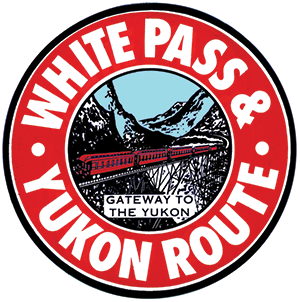 WP&YR No. 62 was a truly unique locomotive. A Baldwin class 10-28D, construction number 17895, was built in June 1900. She had a 60-inch diameter boiler, 17×22-inch cylinders, 44-inch diameter drivers, and carried about 83,000 lbs. on her drivers when in working order. These specifications yielded a tractive effort of 22,100 lbs. In later D&RG terminology, she would have been classed a T-22, (“T” for ten-wheeler and “22” for 22,100 lbs. tractive effort). An interesting aspect of No. 62 was that she had the longest, rigid, driver wheelbase of any of the WP&YR’s locomotives until World War II at 12-feet 6-inches. According to the late J.D. True, No. 62 could handle 120 tons up “the Hill,” the same amount as the 59-class (see the January/February 2023 GAZETTE).
WP&YR No. 62 was a truly unique locomotive. A Baldwin class 10-28D, construction number 17895, was built in June 1900. She had a 60-inch diameter boiler, 17×22-inch cylinders, 44-inch diameter drivers, and carried about 83,000 lbs. on her drivers when in working order. These specifications yielded a tractive effort of 22,100 lbs. In later D&RG terminology, she would have been classed a T-22, (“T” for ten-wheeler and “22” for 22,100 lbs. tractive effort). An interesting aspect of No. 62 was that she had the longest, rigid, driver wheelbase of any of the WP&YR’s locomotives until World War II at 12-feet 6-inches. According to the late J.D. True, No. 62 could handle 120 tons up “the Hill,” the same amount as the 59-class (see the January/February 2023 GAZETTE).
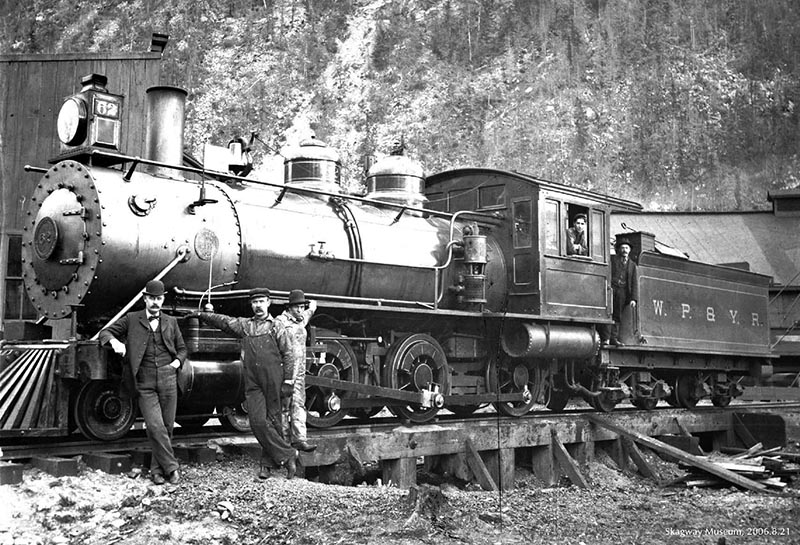
ABOVE: WP&YR No. 62 sporting white “extra” flags, poses for her portrait at the ash pit near the Skagway shops. The odd bulging front of the firebox can be seen between the second and third set of drivers. The air tank under the fireman’s side of the locomotive will be removed and a much larger one will be installed on the deck of the tender later in her career. —Unknown photographer, courtesy the Skagway Museum, 2006.8.21
No. 62 used a unique, tapered, and sloped firebox style set between the third driving axles wheels and flared out between the second and third axle. The fire box was 9315/16-inches long and measured 397/8-inches wide and 531/2-inches deep at the front, 243/8-inch-es wide and 441/4-inches deep at the rear. J.D. True wrote in his book It Happened on the White Pass that he had never seen a firebox like the one No. 62 had. He went on to write, “to get coal in the front corners required slinging the coal up on the side sheets.” Whatever it took to fire the locomotive, he wrote that he “always gave No. 62 a good rating;” high praise from a man who knew the steam locomotives of the White Pass.
From the start, No. 62 was the lead locomotive paired with the WP&YR No. 61 in rotary service. It might seem odd that the White Pass put these two together for that purpose, as one had 44-inch diameter drivers and the other had 38-inch diameter drivers. The physics behind this pairing worked because these two locomotives were in and out of sync quickly. Locomotives with similar sized drivers will get in sync when working together and are much more likely to slip when this happens. Having No. 62 with her tall drivers and No. 61 with her short drivers meant that they were never in sync long enough to lose traction.
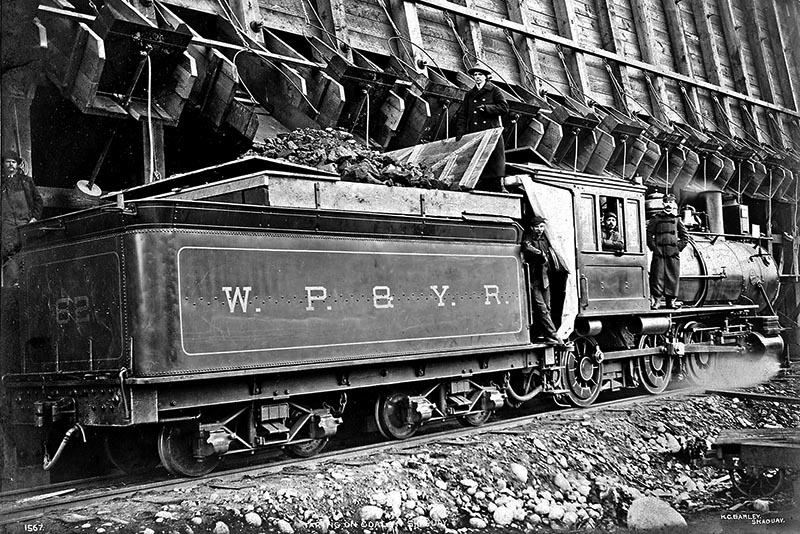
ABOVE: WP&YR #62 takes on coal at the 50,000-ton capacity coal bunker in Skagway before her tender was modified. The shop crew installed “coal boards” on the locomotive tenders and curtains at the rear of the cab every fall in preparation of the harsh winters. The coal boards included top doors to keep the coal free of snow. —Photo by H.C. Barley, Bruce Pryor Collection
Prior to 1914, the air tank under the fireman’s side of cab was removed and a larger air tank replaced the second tank on the rear of the tender. To accomplish this, the tender flair was modified like those of the 59-class tenders. A second air pump was later installed like the rest of the WP&YR fleet. White Pass No. 62 received electric lights in 1919.
Because of the Japanese invasion of the Aleutian Islands in early 1942, the U.S. government was motivated to build the Alaska-Canada Highway, or Alcan Highway. Massive amounts of equipment and supplies were needed for the construction of the 1400-mile road. Whitehorse, Yukon Territory, the northern terminus of the WP&YR, was one of the supply points for the construction of the Alcan Highway. The United States Army leased the WP&YR effective October 1, 1942, for the duration of the War as the WP&YR just could not handle moving the vast number of supplies that the Army needed. One month saw the railroad handle more than twice the yearly average tonnage that the WP&YR had handled before the war. Mother Nature further contributed to the situation by throwing two of the worst winters on record (1942-43 and 1943-44) at the line and the Army operators. The war years were tough on the men and equipment that worked the White Pass & Yukon Route.
A U.S. Army report dated July 22, 1944, stated: “Loco. 62, throat sheet in very poor condition, needs new smoke box, new tubes, crown bolt heads burned, and crown sheet in very poor condition, fire box in need of heavy repairs.” The report went on to recommend that No. 62 be scrapped. The reality was that No. 62 was officially retired in 1946 and would stay on the books until another year be-fore she was written off. Her tender was placed behind No. 66 in 1947. She joined several of her stable mates as riprap in the Skagway River near mile post 2.4 in 1949 and remains there today.
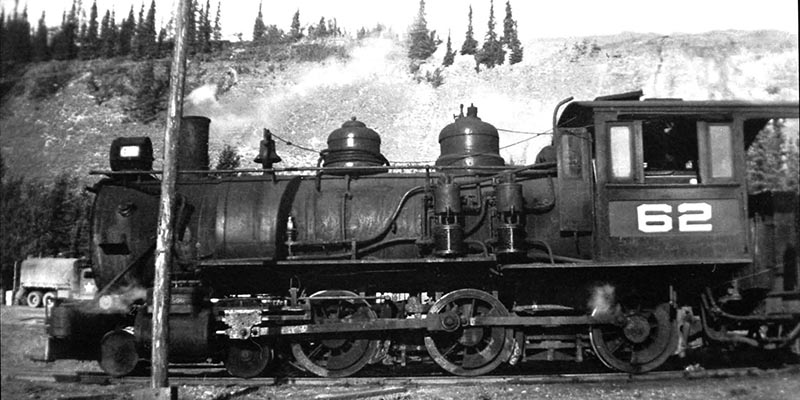
ABOVE: WP&YR No. 62 looks well used in this shot taken in Whitehorse, Yukon Territory, during World War II. She no longer has her “road pilot,” instead she now sports foot-boards up front indicating her likely use as a switcher. By July of 1944, No. 62 was out of service and the U.S. Army was recommending that No. 62 be scrapped due to multiple issues. —Unknown photographer, Bruce Pryor Collection
While all the other new locomotives bought by the White Pass & Yukon Route at the turn of the last century were outside frame engines, No. .62 was a unique, long-wheelbase, inside frame 4-6-0. She had a uniquely shaped firebox and the tallest drivers in the fleet. The late Carl Mulvihill of Skagway referred to No. 62 as the “Passenger Locomotive,” and while I do not doubt that he had knowledge of the reason (aside from the driver diameter), I have found no concrete evidence that she was specifically used as such. Number 62 did spend the winters shoving a rotary plow up and down the steep grades. Having worked on the WP&YR for well over forty years, her success can be measured by her longevity.
Once again, I would like to acknowledge Boerries Burkhardt, David Fletcher, Robert Hilton, Chuck Morse, Bruce Pryor, and John Stutz for their assistance, insight, and information. Next time in part 9, I will examine three second-hand locomotives that the White Pass & Yukon Route purchased in 1900, accompanied by yet another of David Fletcher’s drawings.


